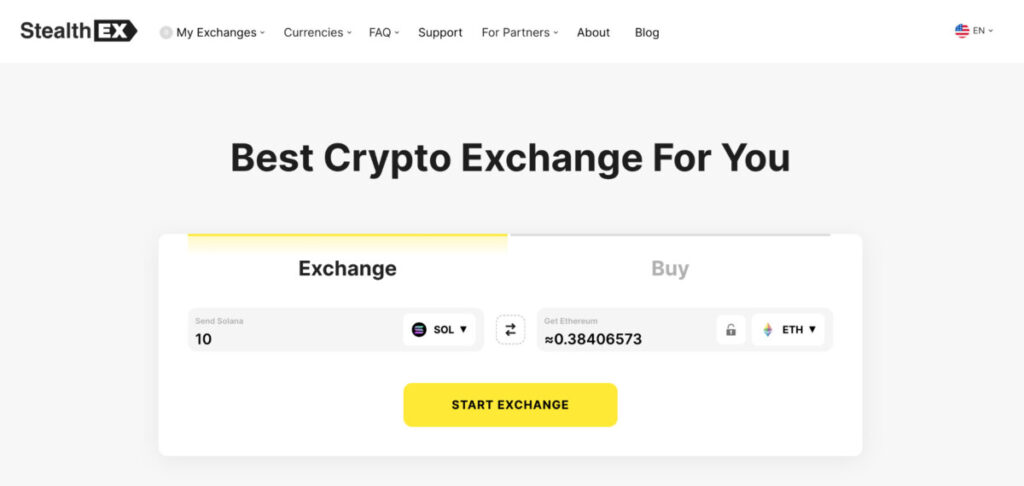Understanding Cross-Chain Bridges
Blockchains are now recognized as a potentially revolutionary technology in a variety of fields, including supply chain tracking and healthcare, as well as the underlying technology for cryptocurrencies such as Bitcoin. The widespread interest in blockchain technology has generated a number of research and development activities. However, the blockchain market is highly fragmented, and customers have to choose from a variety of incompatible or poorly compatible networks: present protocols and standards do not provide 100% interoperability between a huge number of blockchains that exist on the market.
Interoperability refers to a distributed ledger technology (DLT) design's ability to receive and exchange data with external systems. Cross-chain technology enables data exchange between DLT designs or external systems, hence promoting interoperability.

The concept of cross-chain technology adds tremendous value to services available to blockchain developers and users. Cross-chain bridges can help crypto enthusiasts by providing support for several blockchain variations and help taking the value of smart contracts, NFTs, and tokenization outside the Ethereum blockchain to different networks.
The evolution of cross-chain token production has created a plethora of opportunities. Developers can now combine the strengths of many blockchains to develop applications with unrivaled capabilities. Consider DeFi platforms that smoothly interact with assets from many chains, or non-fungible tokens (NFTs) that may be traded across multiple blockchains. Cross-chain development also promotes innovation by allowing developers to try out new consensus mechanisms and governance structures.
Cross-Chain Bridging in Crypto: A Wider Range of Opportunities
Cross-chain bridges allow for interactions between various blockchain networks. Currently, blockchains exist primarily as segregated networks incapable of properly communicating and sharing data with one another. For example, Ethereum users cannot build smart contracts on the Bitcoin network, and Bitcoin holders can’t use their tokens to conduct transactions on the Ethereum network. Cross-chain bridges connect individual blockchains, enabling the transfer of assets and information between them. They have emerged as one of the available solutions that are being used to connect different blockchains and ecosystems within the crypto space.
Before blockchain bridges, you’d have to rely on the services of centralized exchanges (CEXs) like Binance or Coinbase if you want to use a particular asset on another blockchain. A cross-chain bridge would allow you to convert and use your crypto on a particular network without having to go through a time-consuming process on a CEX. It works by encapsulating tokens in a smart contract and then issuing native assets that may be used on any other blockchain of choice.
Blockchain bridges enable customers to reduce transaction costs while improving their user experience. Imagine having to go through many exchanges every time you want to swap a token. Aside from the greater fees connected with doing this every time, the whole process of connecting and transferring funds between two different blockchains is quite cumbersome. A cross-chain bridge connects users to alternate platforms, allowing them to leverage features that the original blockchain may lack.
In addition, cross-chain bridges benefit developers since they enable the creation of cross-chain apps and allow application users to engage with the same dApp across several chains. If a network is crowded, customers can move to another chain to improve their dApp user experience (UX). As a developer, on-chain liquidity is important to the success and popularity of your dApp project. The issue is that most new-generation alternatives to Bitcoin or Ethereum are less popular and liquid.
Cross-chain bridges, on the other hand, enable dApp developers to tap into liquidity accessible across many chains. These applications allow users to transfer funds between different blockchains, allowing value to flow across many platforms. Some cross-chain bridges boost interoperability by facilitating the movement of tokens across independent blockchains. Developers can integrate such bridges into dApps to increase available liquidity.
Cross-Chain Swaps and Their Importance
Simply put, cross-chain swaps are a method for trading a token issued on one blockchain for a token issued on another blockchain in a trust-minimized way. While users can already access cross-chain swap functionality via centralized exchanges, this adds multiple layers of friction (e.g., transferring tokens to an exchange, swapping them directly or indirectly through a medium of exchange such as USD, and then returning the swapped tokens to a wallet on a different blockchain). Furthermore, this method compels customers to engage custodial services and temporarily relinquish control of their possessions. For something as basic as a cross-chain swap, this becomes a significant impediment to constructing a world fueled by sovereign digital asset ownership.
In the rapidly expanding world of cryptocurrency, seamless and secure cross-chain transactions are vital. Cross-chain swaps provide a suite of benefits to crypto traders:
- Lower fees. The absence of a third party generally reduces transaction costs.
- Cross-chain interoperability. Users can exchange assets from different blockchains without losing assets or private keys’ custody.
- No fiat currency is involved. Crypto users can exchange assets without utilizing fiat currency as a baseline value.
- Faster speeds. Transactions are executed swiftly since the smart contract automatically executes once each party does its part.
- Enhanced security. The smart contracts involved offer higher security since users can regain their assets if the other party fails to perform as agreed.
Challenges and Solutions in Cross-Chain Transactions
In their current form, cross-chain swaps present several challenges to users. They can be burdened with technical complexities: atomic swaps (i.e swaps that enable P2P transactions between parties wishing to exchange cryptocurrencies on different blockchain networks) require exchanging hashed cryptographic information. This closes the door to traders who lack the technical knowledge to understand such details and those with privacy concerns.
In addition, atomic swaps are only possible for cryptocurrencies belonging to networks with similar cryptographic hashing algorithms limiting the options for traders. Moreover, the atomic swapping process comprises more steps than trading on a centralized exchange. To top it off, cross-chain swaps don’t allow crypto to fiat exchanges: a user will have to look for an alternative.
There are a number of solutions on the market that try to handle the various hurdles that prevent blockchains from achieving complete compatibility. However, before we explore them a bit more, it’s important to understand the following: blockchain implementations, by definition, are decentralized, running on dispersed networks powered by consensus algorithms. Essentially, they function in silos, which means that Blockchains such as Ethereum, Bitcoin, and Ripple cannot communicate directly. This lack of compatibility is a key barrier to the widespread proliferation and adoption of blockchain technology. However, some networks are trying to overcome this issue.
Polkadot is a well-known example of a multi-chain platform that enables different blockchains to interact. Polkadot's relay chain provides security, and attached parachains can execute transactions concurrently, considerably enhancing scalability. As a result, the utility of a certain crypto asset is expanded outside its native network, resulting in the formation of a symbiotic ecosystem.
Cosmos, another well-known cross-chain network, uses a slightly different interfacing mechanism; each blockchain in the Cosmos ecosystem functions autonomously but can interface with other Cosmos blockchains via Inter Blockchain Communication (IBC).
Additionally, there are a number of popular cross-chain bridges that enable swaps between different blockchains. These are:
- Wormhole. Wormhole is a popular cross-chain bridge that enables the transfer of tokens between the Ethereum and Binance Smart Chain networks. Everstake serves as a validator for Wormhole, ensuring the security and integrity of cross-chain transactions.
- Axelar. Axelar is a cross-chain communication protocol that facilitates interoperability between various blockchains. Everstake acts as a validator for Axelar, enabling smooth and secure cross-chain transfers for users.
- Orbit. Orbit is a decentralized bridge connecting various blockchain networks, allowing for the seamless transfer of assets. As a validator for Orbit, Everstake ensures the reliability and trustworthiness of cross-chain transactions through this bridge.
- Binance. Coming from the world’s leading exchange, Binance Bridge is an Ethereum-BNB Smart Chain Bridge that allows anyone to convert into and from the BNB Smart Chain and other BSC-compatible formats. At the time of writing, the Binance Bridge supports the conversion of ERC-20 tokens along with coins on other networks like XRP, LINK, ATOM, DOT, XTZ and ONT.
- Avalanche. The Avalanche Bridge is a two-way cross-chain bridge between Avalanche and the Ethereum network. It uses ChainSafe’s ChainBridge to enable two-way transfers of both crypto tokens and non-fungible tokens (NFTs).
- AnySwap. Like the Avalanche Bridge, Fantom’s AnySwap is a bi-directional solution that facilitates cross-chain transfers between the Ethereum Network and the EVM-compatible Fantom Network. AnySwap offers a multi-chain liquidity solution that employs liquidity pools to facilitate cross-chain swaps. The liquidity pools that have been implemented across several blockchain networks make it easier to move funds to Fantom from Ethereum, Avalanche, Polygon, and BNB Chain.
StealthEX: Simplifying Cross-Chain Swaps
In addition to various networks that enable cross-chain swaps, there are individual solutions that promote blockchain interaction and compatibility. One of such platforms is StealthEX.
StealthEX is an instant non-custodial crypto exchange that features over 1400 digital assets and aims to be at the forefront of innovative crypto solutions. By introducing cross-chain swaps, StealthEX helps make the crypto landscape smoother and more transparent. StealthEX enables customers to seamlessly swap assets across chains in minutes, eliminating the need for external bridges or a third party. Many exchanges and wallets restrict users to exclusively swapping within certain chains, whereas cross-chain swaps need bridging. This drastically limits the user experience.

StealthEX allows the user to exchange cross-chain without bridging. A broad network of liquidity providers (LPs), which include major CEXs and DEXs, and an algorithm that provides the best pricing among LPs, help enable cross-chain swaps. StealthEX works with a variety of liquidity providers, including Binance, Kucoin, Huobi, Uniswap, and Pancakeswap. StealthEX distinguishes itself from other cryptocurrency exchanges due to its large asset base and bridgeless cross-chain transactions. While StealthEX provides hassle-free cross-chain transactions with no third parties, bridging is another common means of connecting various blockchains.
Cross-chain swaps with StealthEX provide users with independence and multi-cryptocurrency exchange. Essentially, it allows users to directly transfer cryptocurrency between two chains. The platform provides a tremendous chance for cross-chain transactions through the use of specific algorithms.
Moreover, if compared to other cross-chain solutions, StealthEX is easier to use (no registration required), features an intuitive and user-friendly design, and offers the most affordable rates on the market.
How to Do a Cross-Chain Swap Via StealthEX?
It’s very simple due to the intuitive user interface. Just go to StealthEX and follow these easy steps:
- Choose blockchains and the crypto pair for exchange. For instance, SOL to ETH.
- Press the “Start exchange” button.
- Provide the recipient address to transfer your Bitcoin to.
- Process the transaction.
- Receive your ETH coins.

StealthEX: Security Is of Paramount Importance
StealthEX is among the most secure exchanges available. As it is a non-custodial exchange, this means that no user funds are stored on the website. All swaps are done between external, third-party wallets, thus eliminating any security breaches. Throughout its five years of operating on the market, the platform has never had a single security problem due to its non-custodial nature.
StealthEX offers 24/7 customer support on its website via online chat, which you can expect a reply to within 3 minutes or less. The platform is proud of its efficient and helpful customer support team that tirelessly works to maintain top-notch service. There are numerous user testimonials that support StealthEX’s image as that of a swapper that provides its users with a seamless and fast cross-chain experience.
All in all, swaps are almost instantaneous, smooth, and easy to do. If you’re tired of many intermediaries in your swaps, StealthEX should probably become your number one solution.
Conclusion
Cross-chain solutions have the potential to alter the future of blockchain networks by breaking down boundaries and creating a seamlessly integrated, symbiotic ecosystem. By promoting seamless interoperability between previously-siloed blockchain networks, cross-chain bridges enable users to access greater liquidity and better UI while extracting more value from owned assets. Blockchain can ultimately realize its full potential by integrating cross-chain platforms, effortlessly transferring value across networks, making the technology more accessible, and fostering a cooperative blockchain ecosystem. As more and more innovative platforms and blockchains appear on the market, the crypto landscape will become more unified and easy to navigate.
FAQs (Frequently Asked Questions)
What Is the Cross-Chain Technique?
The cross-chain technique in cryptocurrency allows for the transfer of assets and information between different blockchain networks, enhancing interoperability and connectivity.
What Are Cross-Chain Swaps?
Cross-chain swaps enable the exchange of cryptocurrencies between different blockchains without needing a centralized intermediary, using a trustless and decentralized method.
What Are the Benefits of Cross Chain Bridge?
Cross-chain bridges facilitate asset transfers between blockchains, enhancing liquidity, interoperability, and access to diverse ecosystems and applications.
Is Cross Chain Bridge Safe?
Cross-chain bridges have risks, including security vulnerabilities and potential for exploits, but safety varies by the bridge's design and security measures.

